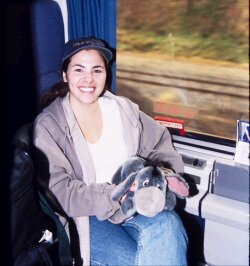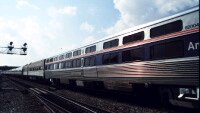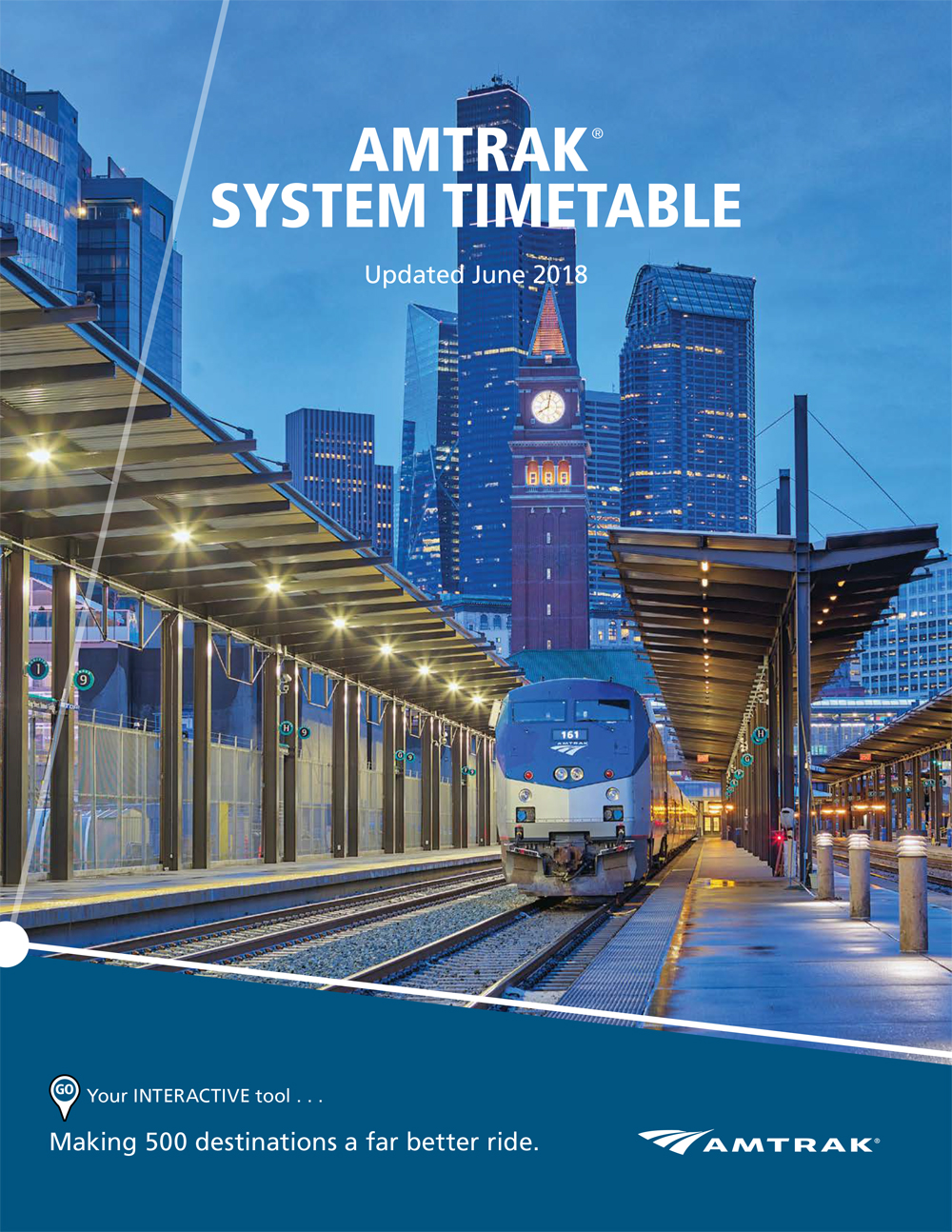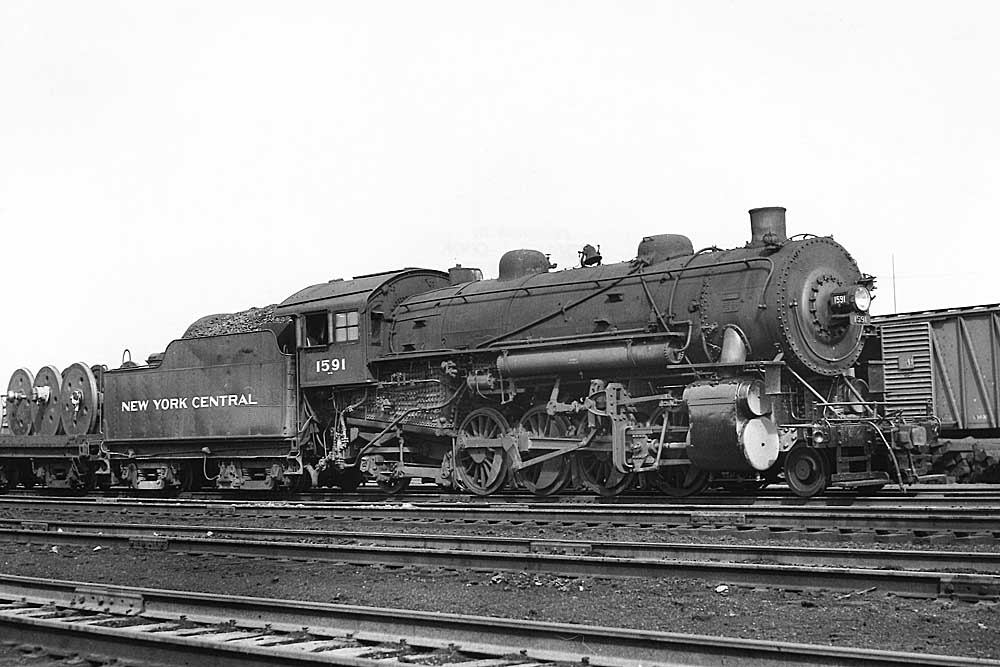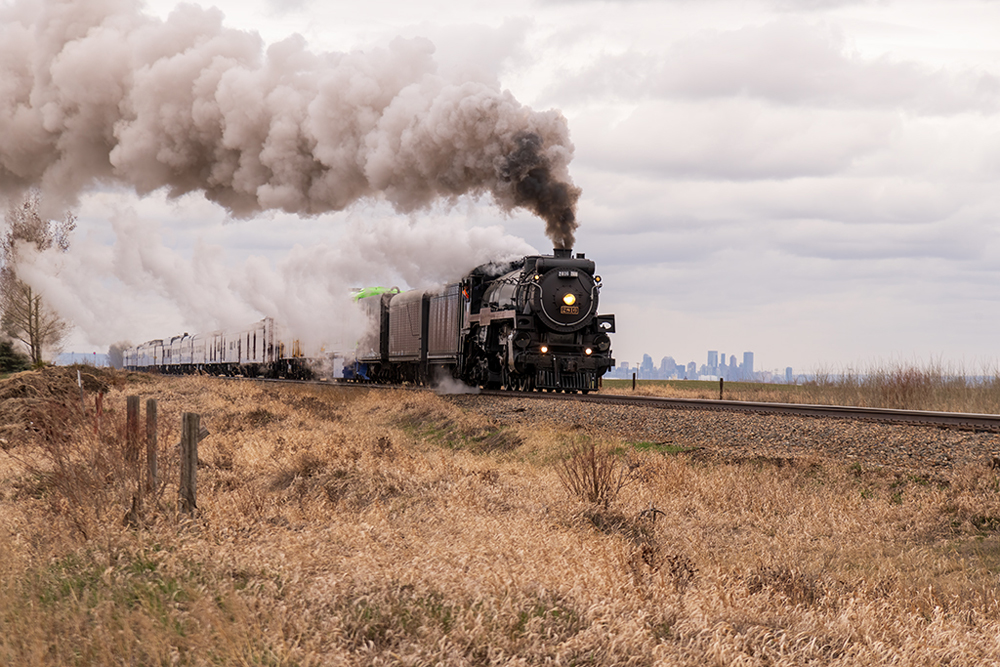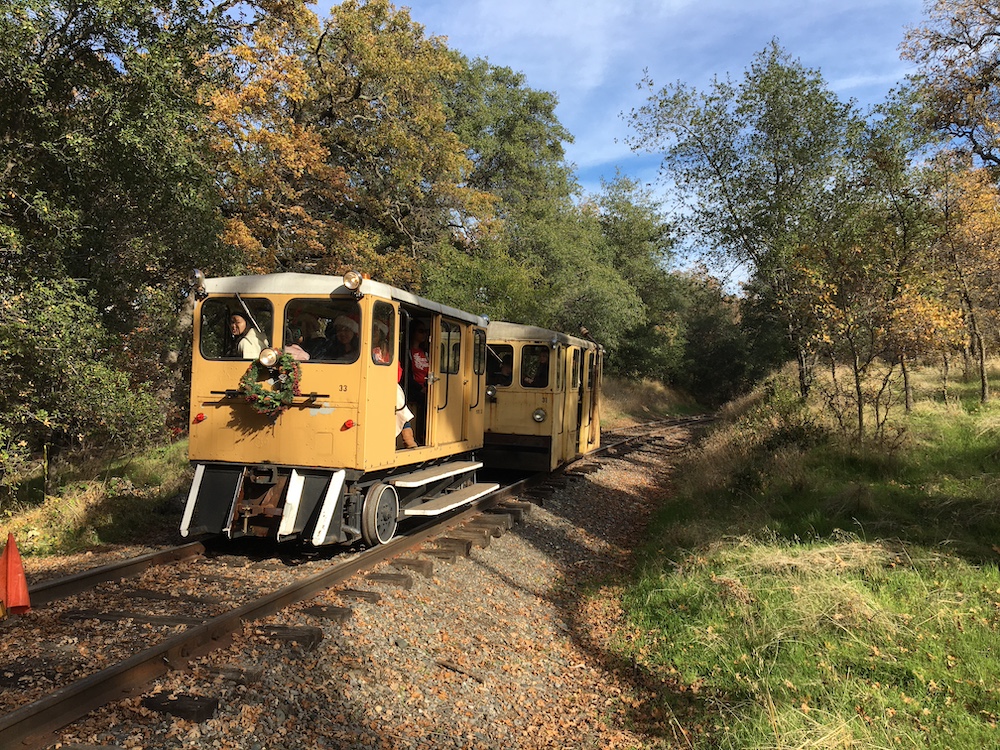Like many other recent sleeping car travelers, this was Sandra’s first time on a long-distance train. How was the little compartment, a friend on her cell phone asked?
“It’s funny,” Grausso remarked. “It’s clean, but it’s just funny.”
Later she admitted that the first night out was rocky…literally. Her room at the end of the Superliner sleeper was swaying back and forth (probably going over Cajon Pass), “but I got used to it,” she recalled.
“Scenery the next day was fantastic and the crew on that train was fun. The guy downstairs called his snack bar, ‘Paddy’s Pub,’ and the dining car guy was great. He made the food sound so enticing on the announcements, and – you know what? – it was! I wouldn’t have looked into this (kind of a trip) before, but I could make the time so I did it,” said Grausso. “It was really a great experience.”
“We’ve been full just about every trip since the beginning of the summer, and through the fall we’ve been getting a lot of airline people,” observed Grausso’s sleeping car attendant, Tom Finnegan.
Out of Chicago, Finnegan had taken up to ten minutes per room to acquaint the uninitiated with the esoteric details of seat-to-bed transformation, the location of on-board refreshments and the shower at the end of the car, wake-up call protocol, and titles of the four movies alternating on the Viewliner’s two video channels.
With more first-time passengers like Grausso giving it a try, crawling between the sheets on an overnight train doesn’t come cheap.
Sleeping cars and other extra-fare travel options such as Business Class show up as “Accommodation charges” on tickets, and are priced separately from – and in addition to – the cost of the rail transportation reflected in the standard coach fare.
Because Amtrak has so few sleepers – ranging from one to three per train, even in peak periods – management charges whatever the traffic will bear on any given date, based on historical and current demand.
No company in the hotel, transportation, or broadcasting business with inventory that goes away every day – sold or unsold – wants to offer its product for less than someone will pay. Trouble is, if there are no buyers, the revenue is zero. So they all hedge their bets by raising prices as sell-out increases.
This strategy, known as “yield management,” is employed by virtually all major travel and tourism companies, including Amtrak.
To price its bedrooms, Amtrak established “fare buckets,” an array of possible fares between each set of city-pairs on a train’s route.
When demand for space is expected to be high – such as the heavy travel days around Thanksgiving and Christmas, summer weekends, or during special events that cause ridership to swell on certain trains, like Mardi Gras on the Crescent, Sunset Limited and City of New Orleans – only the top bucket is offered, even if extra sleepers are re-deployed from other routes.
The rest of the time there may be up to five different price levels, with the biggest bargains targeted for traditionally light periods. As the trains fill up, the lower fares are withdrawn.
The same drill, albeit with fewer “buckets,” is used for long-distance and corridor coach travel, as well.
A revenue management team, which includes each train’s (or corridor) assistant general manager and financial people in Washington, establishes computer-driven pricing triggers that automatically move fares higher once certain capacity levels are reached.
Since September, the demand for train travel has pushed fares to the highest buckets on most departures, and has generated marketing discussions of re-pricing the scarce sleeping cars, especially deluxe bedrooms, at even higher levels.
Of course, if Amtrak had gotten some of the $2.4 billion Congress authorized between 1997 and 2001 but failed to appropriate, the money to repair some wreck-damaged Superliner sleepers that have been languishing for almost a decade at its Beech Grove, Ind., shops would be generating sizable returns today. And more travelers’ needs would be satisfied.
The price of a bedroom always builds in the cost of “complimentary” dining car meals for two people, even when only one person is traveling.
Many sleeping car veterans have decried this Amtrak version of the “single supplement,” especially after the retirement of older, more economical Slumbercoaches and Heritage Roomettes. Management argues that if someone will pay and the car is sold out, why cut the rate just because only one person is traveling?
Perhaps nowhere is the price/meal discrepancy more pronounced than the overnight trains between Chicago and New York. The eastbound Lake Shore Limited serves three meals in a full dining car, while the three-day-a-week Cardinal offers only “sandwiches, snacks and beverages” in a lounge car.
On the other hand, because buying a sleeping car accommodation always entitles its holder to the lowest rail fare bucket, adding a second person in the room on longer trips can often be accomplished at little extra charge. That’s what Sandra Grausso did when she invited family member Kristen to come with her to New York. Sandra would have had to pay the Chief’s and Lake Shore’s sleeping car charges whether she was alone or not. The extra cost of Kristen’s coach fare, because she was booked in Sandra’s sleeper, amounted to a fraction of the cost of the total trip.
The “free” breakfast, lunch, and dinner made the extra outlay even more enticing. Hey, a second person would have to eat somewhere, right?
The “meals for two” advantage can also be used on trains that have day and night components.
For instance, the product line manager of the City of New Orleans would love to fill his sleepers with the highest revenue end-point travelers. Yet a certain number of passengers will only need a bedroom for a portion of the train’s overall trip, say overnight from Chicago to Memphis. The manager could then resell that bedroom at a lower “day rate” accommodation charge to a passenger traveling from Memphis to New Orleans. This could be a viable alternative when the daytime traveler might be forced to pay more for a higher-bucket coach seat plus the full cost of meals. (First-class travel from Memphis to New Orleans includes breakfast and lunch in the dining car.)
Quirks of the trade
Amtrak’s yield management does have its foibles.
I was quoted a $211 total fare on the Capitol Limited from Chicago to Washington last September, but when the reservationist recapped the booking, I discovered that the room assigned was number 10 in car 3000. Over the wheels at the end of the car with the sound of the sliding door slamming shut as people sneak in for breakfast at 6:30 a.m.? Uhh, no thanks. Anything else available?
“How about number 12 in the 3001?” she asked.
Rooms 11-14 in a Superliner are on the lower level which puts them close to the wheels and don’t offer as good a view, but they are tucked out of the way and usually quiet unless there is a loud bunch in family bedroom 15. Besides, the luggage racks, shower and four bathrooms are on that level, and you can watch the action at station stops. I’ll take it.
“OK, your fare comes to $318,” she advised.
Huh? How could this be – two rooms with a $117 price difference on the same train? The answer: by going into the other car I had just kicked its bucket.
Despite the increased demand for sleeping car space, the winter months after the holidays offer an opportunity to take advantage of the least expensive fare levels available – provided you book early.





